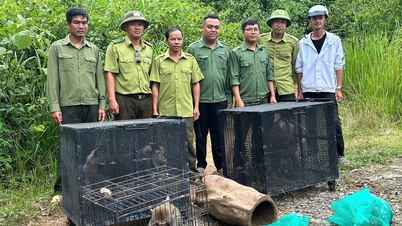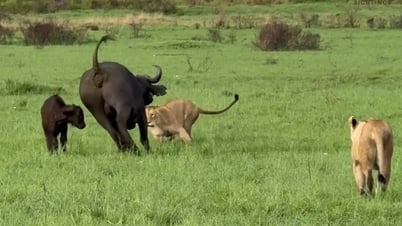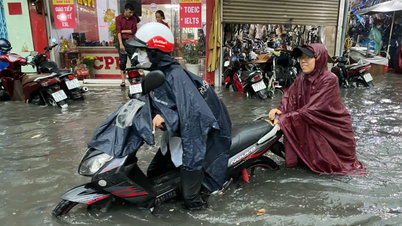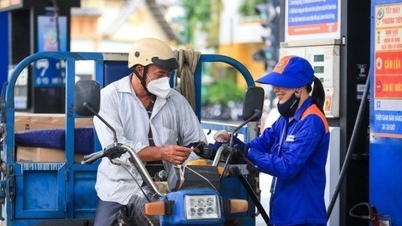Research has shown that radiation from nuclear testing and accidents accumulates in the bodies of many animals.
Sea turtles in Enewetak Atoll
Much of the world's radioactive contamination comes from testing conducted by major powers in the race to develop nuclear weapons in the 20th century. The United States tested nuclear weapons from 1948 to 1958 on Enewetak Island.
In 1977, the United States began cleaning up radioactive waste, much of it buried in concrete pits on a nearby island. Researchers studying nuclear signatures in sea turtles speculate that the cleanup stirred up contaminated sediment that settled into the atoll’s lagoon. This sediment was then ingested by sea turtles as they swam, or affected the algae and seaweed that make up much of the turtles’ diet.
The turtles in the study were found just a year after the cleanup began. Traces of radioactivity in sediments were etched into the turtles’ shells in layers, according to Cyler Conrad, a scientist at the Pacific Northwest National Laboratory who led the study. Conrad likens the turtles to “swimming growth rings,” using their shells to measure radiation in the same way that tree rings record age.
Wild boar in Bavaria, Germany
Weapons testing also spreads contamination by releasing radioactive dust and ash into the upper atmosphere, where it circulates around the planet and accumulates in distant environments. In the forests of Bavaria, for example, some wild boars sometimes have extremely high levels of radiation. Scientists previously thought the radioactive dust came from the 1986 meltdown at the Chernobyl nuclear power plant in Ukraine.
In a recent study, however, Steinhauser and his colleagues found that 68% of the radioactivity in Bavarian wild boars came from global nuclear testing, which took place from Siberia to the Pacific Ocean. By looking for “nuclear fingerprints” of different cesium isotopes, some of which are radioactive, Steinhauser’s team ruled out Chernobyl as the source of the contamination. The wild boars were exposed to radiation by eating truffles, which absorbed radiation from nuclear fallout that had accumulated in nearby soil.
Steinhauser studied samples of wild pigs, usually taken from their tongues, and found 15,000 becquerels of radiation per kilogram of meat. This far exceeds the European safety limit of 600 becquerels/kg.
Reindeer in Norway
The Chernobyl disaster sent radioactive dust across the continent, leaving traces that are still visible today. Much of the radioactive dust was blown northwest to Norway and fell in rain. The path of the dust was weather-dependent and unpredictable.
Radioactive dust is absorbed by fungi and lichens, which are more susceptible because they lack root systems and draw nutrients from the air, according to Runhild Gjelsvik, a scientist at the Norwegian Radiation and Nuclear Safety Authority. They then become food for the reindeer herds. Shortly after the Chernobyl accident, the meat of some reindeer contained radiation levels of more than 100,000 becquerels per kilogram.
Today, most of the radioactive lichen has been eaten by animals, meaning that the radioactivity in most of Norway’s reindeer is below European safety standards. But in some years, when wild mushrooms grow in larger quantities than usual, a sample of reindeer meat can spike to 2,000 becquerels. “Chernobyl-derived radioactivity is still being transferred from the soil to mushrooms, plants, animals, and humans,” says Gjelsvik.
Monkeys in Japan
In Japan, a similar problem has plagued red-faced macaques. After the 2011 meltdown at the Fukushima Daiichi nuclear power plant, cesium levels in monkeys living nearby rose to as high as 13,500 becquerels per kilogram, according to a team led by Shin-ichi Hayama, a professor at Nippon University of Veterinary and Life Sciences.
Hayama’s research focused primarily on tissue samples from the monkeys’ hind legs. The results showed that they likely absorbed radiation from eating local tree buds and bark, along with various foods like mushrooms and bamboo shoots. The high cesium levels led the researchers to speculate that the monkeys born after the accident may have suffered from stunted growth and small heads.
Scientists who study radioactive animals stress that the amount of radiation in their bodies is unlikely to pose a threat to humans. Some species, like the monkeys in Fukushima, are not a food source and therefore pose no risk. Others, like sea turtles, have such low levels of radiation that they pose no danger. Others, like Bavarian wild boars and Norwegian reindeer, are closely monitored to ensure unsafe meat does not reach consumers.
An Khang (According to National Geographic )
Source link








































































































Comment (0)